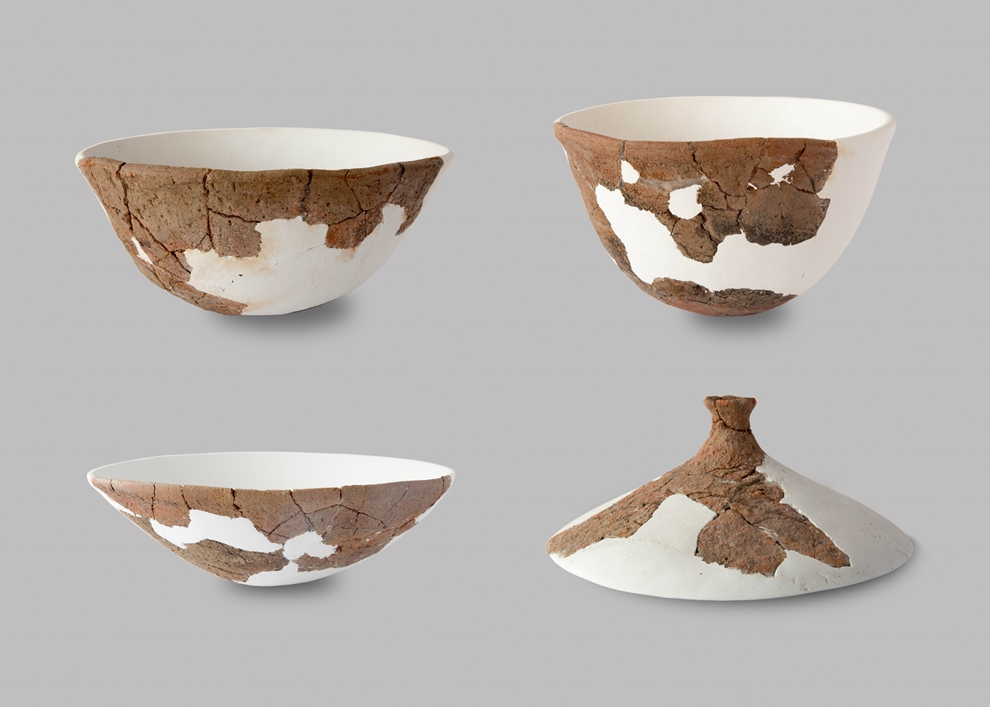Top 10 archaeological finds of 2015 highlight balance in age, location

The picture shows four pieces of pottery unearthed from Neolithic remains in southeastern coastal areas of Hainan Province. The excavation offers valuable insight into the study of the environment and people's means of survival during the period.
Chinese archaeology is becoming increasingly balanced in terms of the eras and locations of excavated sites, according to a recent list of top 10 findings for 2015.
Released by the China Archaeological Society on May 16 in Beijing, the list includes such discoveries as a Paleolithic site in Gantangjing in Yunnan Province, a Neolithic site off the southeast coast of Hainan Province, the 2,000-year-old tomb of deposed Han emperor Liu He in Jiangxi Province, and the remains of the Cruiser Zhiyuan, a warship that sank during the First Sino-Japanese War (1894-95) in the waters off Dandong in Liaoning Province.
The discovery of the Gantangjing site represents a breakthrough in archaeology on the Paleolithic Era. The thick cultural layer and rich relics offer clues about the productive activities and lives of ancient human beings.
Liu Jianhui, an expert from the Yunnan Provincial Institute of Cultural Relics and Archaeology, said that it is rare in the world to find such a variety of organic artifacts from that era. The wooden artifacts are the oldest ever found in the world. For the first time in China, researchers uncovered evidence of fire use at a Paleolithic site, he said.
Scholars said that the discovery has provided new evidence for studies on the origins of mankind in East Asia, and it demonstrates that the plateau in central Yunnan Province was an important area for the development of civilization.
For a long time, archaeological efforts were concentrated in central China. Other areas, especially frontier regions, were seldom examined, but this has changed in recent years.
Yan Wenming, a senior professor of archaeology at Peking University, noted that the distribution of archaeological projects has become more balanced regionally. Hainan Province in southernmost China had long been largely overlooked by archaeologists, but excavations there in recent years have been fruitful.
Since March 2012, the Institute of Archaeology at the Chinese Academy of Social Sciences has collaborated with Hainan Provincial Museum to conduct field investigations on Hainan Island. After a joint excavation of three significant sites—Qiaoshan, Lianziwan and Yingdun—from December 2012 to January 2016, they have discovered more than 30 prehistoric sites.
Previously, scholars had little knowledge of prehistoric sites in the province. The excavation of the three sites has offered crucial materials for the building of prehistoric archaeological cultural chronology and genealogy on the southeastern coast of Hainan Province.
Yang Yang and Zeng Jiang are reporters at the Chinese Social Sciences Today.
